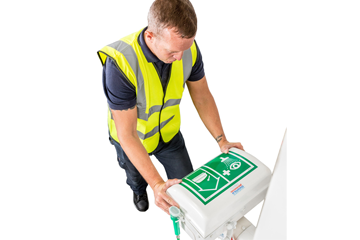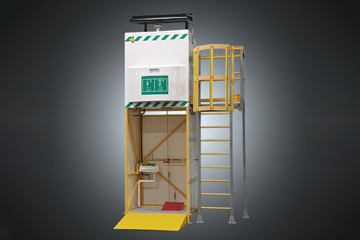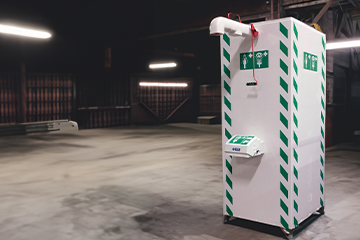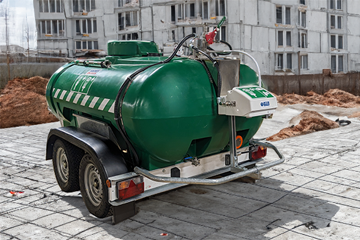Enquiry List () (0)
- 8 Jul 2019

Managing the Risk of Legionella in Emergency Safety Showers and Eye Washes

Legionnaires’ disease is contracted when bacteria in water droplets or aerosols are inhaled into the lungs. Certain conditions allow Legionella bacteria to multiply rapidly and increase the risk of an outbreak, these include temperatures between 20-45 C, stagnated water and areas that produce a lot of water spray. As such, emergency safety showers and eye wash units, which can often remain unused for extended periods, should be managed effectively to reduce the risk of Legionella bacteria growing, surviving and spreading.
Employers must identify and assess sources of risk, prepare a scheme to prevent or control risk, implement, manage, monitor and keep records of precautions, and appoint a knowledgeable manager. Guidance on controlling the risk of Legionnaires disease is readily available from bodies such as the Health and Safety Executive and the Water Management Society.
Here we aim to summarise ways to manage the risk within emergency safety showers and eye wash units.
- Water Quality
Use a clean, potable water supply.
- Supply Pipelines
As the unit can remain idle for prolonged periods, the risk assessment must take into consideration the condition of the supply line and construction materials.
- Stored (tank) Water
Emergency tank showers which store water must be maintained to potable quality standards. The tank should remain clean and contaminant free.
- Water Temperature
ANSI and European standards recommend tepid water as the flushing fluid in the event of a chemical spill, between
16-38 C. Unfortunately, Legionella pneumophila thrive in temperatures between 20-45 C. When assessing the risk, the water temperature should be taken into consideration but not to the detriment of the proper use and set-up of the safety equipment.
- Weekly Activation Test
Weekly activation of any safety shower or eye wash is essential. The volume of water held in the stagnant zone compared to the volume replaced during routine weekly flushing should be assessed to ensure any sediment build up is minimised.
- Service and Maintenance
A regular service and maintenance plan should be in place to ensure all parts of the equipment is clean and functioning such as nozzles, shower heads and ‘Y’ strainers. This would also include annual disinfection of the water storage tank in the case of emergency tank showers.
It should be remembered that this is life-saving equipment, managing the risk of Legionella is a secondary consideration and must not diminish the function of the primary objective of the safety shower or eye wash – to protect an individual in the event of an accidental exposure to hazardous chemicals.












